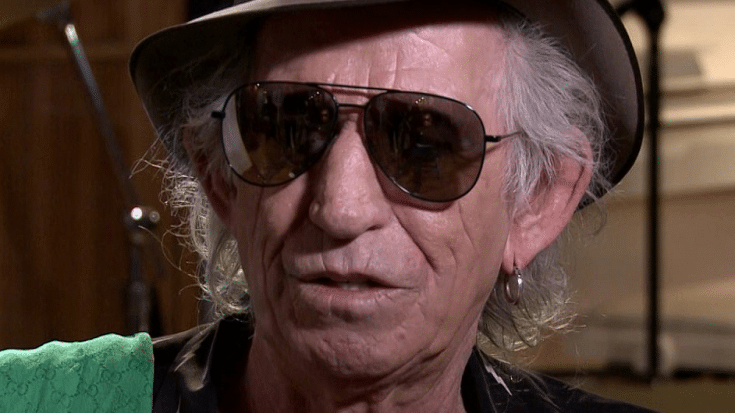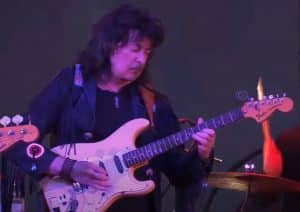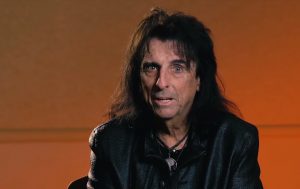Why Keith Richards Don’t Use Guitar Pedals That Much

via Keith Richards / Youtube
In the 1960s, The Rolling Stones emerged as trailblazers in the realm of British rock, establishing themselves as enduring icons within the genre. Their swaggering brand as the antithesis of the Beatles solidified their status as one of the most unmistakable and influential rock bands to date.
Recently, founding guitarist Keith Richards took a trip down memory lane by sharing a vintage video clip where he explained his preference for infrequently using guitar pedals in his musical performances.
This glimpse into Richards’ approach to his craft provides insight into the distinctive sound that he and his longtime comrade, Mick Jagger, forged when they co-founded the band.
The collaboration between Richards and Jagger proved to be transformative for rock ‘n’ roll. Together, they ushered in a new era by crafting a bold, gritty auditory experience infused with the soulful nuances of blues. This unique fusion of elements marked a paradigm shift in the genre, eventually crystallizing into what we now recognize as the formidable genre of hard rock.
Keith wants his sound to come straight out of his amps
In contrast to the widespread use of guitar pedals by many musicians to introduce unique effects into their music, Richards has consistently opted to forge his distinctive sound without relying on these devices throughout the majority of his illustrious career.
Originally shared on YouTube in 2017 as part of his Ask Keith Richards series, the legendary guitarist disclosed his preference for crafting an authentic sound, providing an intriguing glimpse into his artistic philosophy.
Opening up about his perspective, Richards explained, “I aim to get the sound that I want coming straight out of my amplifier.” In doing so, he distances himself from the trend of relying on external effects, emphasizing the importance of capturing the pure essence of his guitar’s tone.
Interestingly, Richards acknowledged his historical role in popularizing foot pedals, particularly with the iconic use of the fuzz pedal in the groundbreaking track “Satisfaction”. However, the riff-meister considered this a “one-off effect”, reinforcing his commitment to preserving the integrity of his sound without overreliance on external enhancements.
“I need my feet to stand up”
Continuing with his characteristic humor, Keith treated his fans with a comical imagery that distinctly reflected the perspective of someone from his generation.
In explaining his reluctance to incorporate the use of various machines on stage, Richards emphasized his straightforward approach to achieving the desired sound. He humorously expressed that he has no intention of engaging in a spectacle of tip-toeing around different contraptions during a performance.
Instead, he maintains a steadfast expectation for his sound to emanate directly from his amplifier, underscoring his preference for a genuine and unaltered sonic experience. In his own words, he asserted, “I expect my sound to be coming out of my amp, and I don’t want to change it once it’s there. I’m not fancy.”
Adding a playful touch to his commentary, Richards concluded his statement with a lighthearted quip, highlighting the practicality behind his choices. With a jestful tone, he declared, “I need my feet to stand up.”
Some of Keith’s favorite pedals
Still, despite his reluctance, as a veteran guitarist and renowned gear collector, the Human Riff still has some great pedals in his possession. At the core of his pedalboard, Richards relies on three essential pedals, each playing a distinct role in shaping his iconic guitar sound.
The Maestro Fuzz-Tone is up first. In actuality, the Fuzz-Tone was the first fuzz pedal ever produced. It would later become well-known thanks to Keith’s usage of it in The Rolling Stones classic “Satisfaction”.
Coming in second is the MXR Phase 100, a flexible phaser pedal that can create a wide range of sounds from fast and glitchy to slow and atmospheric. You can hear the unique effects of the Phase 100 in the song “Shattered”.
Last but not least, Richards uses the Ibanez TS9 Tube Screamer in his setup, which should not be disregarded. A vintage distortion pedal that many well-known guitarists have used, the Stones’ riff-meister rarely uses the Tube Screamer because he usually likes to turn up the gain on his amplifier.











